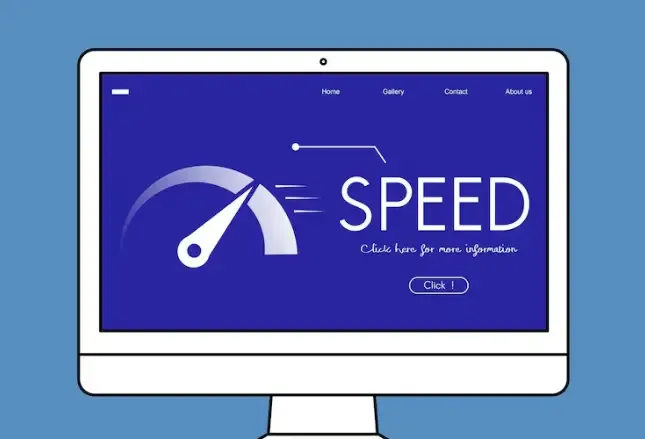Can Client Hints Improve Your Image Loading?
With an increasing number of mobile users, everyone has different device screen sizes and network speeds. The speed at which images load directly affects user experience and search engine rankings.
So, is there a way for a webpage to automatically select the most appropriate images to load based on different devices and network conditions? The answer is: Client Hints detection.
Next, the editor will explain in detail how to use Client Hints to detect and improve image loading efficiency, enhancing website performance.

What isClient Hints Detection?
In simple terms, Client Hints is a communication mechanism between browsers and servers. When a browser requests an image or other resources, it sends device information to the server. After receiving this information, the server can return the image that is most suitable for the current device, rather than returning a single high-resolution image uniformly.
For example:
When users access a webpage using a mid-range or low-end smartphone, and the network environment is 4G or even 2G, if the server directly returns a high-definition large image, it not only loads slowly but also wastes the user's data.
After using Client Hints, the server can directly return compressed and resolution-optimized images, resulting in much faster loading speeds and a better user experience.
Why use Client Hints to improve image loading efficiency?
Reduce redundant traffic
Mobile users do not need large desktop images; images are loaded on demand through Client Hints to save user data.Enhancing user experience
Images load faster, page opening speed increases, user stay time is longer, and bounce rate decreases.Assist with SEO optimization
Search engines are increasingly placing importance on web performance, and pages that load quickly are more likely to gain ranking advantages.Intelligent management of resources
Automatically provide appropriate images for different devices to reduce pressure on servers and CDNs, making the website overall more efficient.
How to implement Client Hints detection in practice.
1. Enable necessary HTTP request headers
Commonly used Client Hints request headers include:
DPR (Device Pixel Ratio)
Viewport-Width
Width (request image width)
Save-Data (data saving mode)
On the server side, images can be dynamically generated based on these request headers. For example:
When mobile users visit, return lower resolution images.
When accessing high-resolution screens (such as Retina display), return HD images.
Users who have enabled "Data Saving Mode" will receive compressed images.
Practical advice:
If using Nginx or Apache, you can automatically generate images of different sizes by configuring rewrite rules or combining image processing modules.
If using a CDN (such as Cloudflare or Alibaba Cloud CDN), most support dynamic image generation based on Client Hints.
2. Configure Response Headers to Optimize Cache Strategy
In order to allow the browser to continuously send Client Hints information, the Accept-CH field needs to be added to the response headers, for example:
In addition, you can add the Vary field to inform the CDN and browsers to cache different versions of images based on these request headers:
This can avoid redundant requests for unnecessary images while ensuring that different devices obtain the most suitable resources.
3. Adjust image quality based on network conditions.
Modern browsers support the Save-Data flag, which can return lower resolution or higher compression images when the user enables "data saver mode."
Practical advice:
For high-resolution screen devices, prioritize clarity.
For low-performance devices, prioritize reducing image size.
Dynamically reduce image quality for mobile network users.
This method is much more flexible than fixed-size images and better meets the needs of mobile users.
ToDetect browser fingerprint detectionThe role of functionality
In addition to Client Hints, you can also use ToDetect browser fingerprinting to obtain more comprehensive device information. ToDetect can capture browser type, version, operating system, device hardware parameters, and even network environment.
Application value:
Accurate identification of high-resolution devices
Ensure that high-definition devices capture clear images to avoid blurriness.Determine old or low-performance devices.
For devices with weak performance, provide compressed or lower resolution images to improve loading speed.Network Intelligent Control
Dynamically adjust the image compression ratio based on the network environment to optimize user experience.
Summary:
Client Hints provides basic information, while ToDetect offers in-depth data, making image loading strategies more intelligent.
Practical suggestions and application scenarios for Client Hints detection
Enable Client Hints
Enable the Accept-CH response header on the server side and handle DPR, Width, and other information.Integration ToDetect
The front end or back end calls the ToDetect interface to obtain more accurate device and network information.Dynamically generate images
Automatically adjust image size and compression ratio based on device pixel ratio, viewport width, and network conditions.Optimize caching strategy
Use CDN to cache different versions of images, reduce duplicate requests, and ensure that each device receives the optimal resources.Monitoring performance
Regularly use web performance tools (such as Lighthouse, WebPageTest) to analyze load speed and continuously optimize strategies.
Multi-Scenario Application Examples:
Mobile news site: Return the optimal images based on mobile resolution and data saving mode.
E-commerce platform: Provide suitable product images for different screens to enhance user browsing experience.
Information websites: Dynamically compress images to ensure fast loading speed of the homepage.
Summary
By using Client Hints detection combined with ToDetect browser fingerprinting detection, you can load images on demand, improve website performance, optimize user experience, and reduce traffic consumption.
Compared to traditional fixed-size image solutions, this approach is more intelligent, flexible, and better aligned with modern user habits. Whether on mobile or desktop, the website can maintain a fast, smooth, and intelligent image loading experience.



